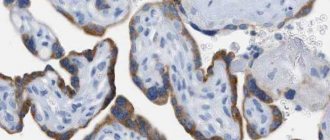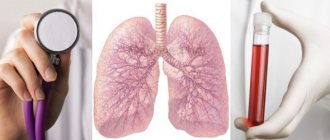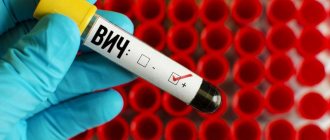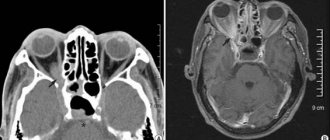In this article we will look at the benefits and harms of donating blood plasma.
Medicine is developing, new ways of healing the body are emerging. These popular methods include donating blood plasma. Many doctors believe that such a procedure can significantly improve a person's condition. This technique increases the protective activity of the body, thanks to which a person gets sick less often. What is the essence of the plasma donation procedure, is it really as useful as they have been saying lately?
Benefit or harm?
Blood plasma donation is essentially just a blood draw, after which it is broken down into plasma and other components. The remainder, as a result of this splitting of the plasma, is poured back into the person. Thus, the patient’s number of useful blood cells is not reduced, but only what is needed for donation is taken.
What are the benefits and harms of donating blood plasma for a donor?
Experts now claim that this technique is completely harmless. You need to know that donating part of your blood is much easier to tolerate than traditional donation. You can donate plasma much more often than the whole substance. After the procedure, the body launches its inherent protective functions, and the patient is able to independently eliminate many diseases. For this reason, doctors most often prescribe blood plasma donation to patients.
The benefits for the body in the case of such a procedure are obvious. Immediately after donating blood, he begins to work to restore lost cells. All cells are renewed, which means the entire immune system is strengthened.
Nature has long invented such a mechanism for renewing blood, and that is why its benefits have been proven.
Reviews from doctors about the benefits and harms of donating blood plasma will be presented at the end of the article.
What is blood plasma?
Plasma is a liquid formed by water and dry substances. It makes up the bulk of the blood - about 60%. Thanks to plasma, blood has a liquid state. Although according to physical indicators (density) plasma is heavier than water. Macroscopically, plasma is a transparent (sometimes cloudy) homogeneous liquid of light yellow color. It collects in the upper part of the vessels when the formed elements settle.
General functions of plasma as a liquid fraction of blood as a whole:
— transportation of formed cells throughout the body;
- performs the function of homeostasis;
- giving blood a liquid structure;
- binding of body fluids.
Features of preparation
To donate blood for components, the donor requires special preparation. First of all, doctors must take a blood test for hemoglobin and viruses from the intended donor. If any infection is detected in the sample, the person will be denied donation; he will be able to donate blood solely for health purposes for himself. After checking the blood, the donor fills out a mandatory questionnaire, only after which he is allowed to donate plasma.
How does blood plasma donation take place, what can you eat? The patient himself should be well prepared for the procedure. It does not require restrictions in lifestyle and nutrition.
The following rules must be observed:
- limit yourself to eating spicy, salty and fatty foods at least a day before the procedure;
- do not take any medications a week before donating blood;
- a week before the procedure, alcoholic drinks are also excluded;
- Before donating, you must eat;
- You must not smoke for two hours before blood donation.
Patients often ask whether donating blood plasma on a full stomach is allowed. Naturally, you need to eat, but breakfast should not be too filling. It could be sweet tea or a cheese sandwich. It is not recommended to eat heavy food before donating plasma. You need to come to the center in the morning, since the donor needs to stay in the hospital for two hours after the procedure.
Taking care of the donor. The doctor explained how plasma donation is carried out
Transfusion of blood plasma with antibodies to COVID-19 has a therapeutic effect for patients with coronavirus infection.
“The donor's fear of the procedure can lead to fainting. But we also try to work as psychologists, to talk with people. Before and after the procedure, we treat our donors to tea and cookies,” says the doctor.
An AiF correspondent spoke with the chief transfusiologist at the Konchalovsky Hospital in Zelenograd, Violetta Danilets, about who can become a donor and why it’s not scary.
— Violetta Vyacheslavovna, how many people have already become donors in your hospital?
— We have been working since April 30, during which time 75 people have donated plasma. In total, about 130 volunteers came, but some of them were unable to become donors for medical reasons.
Improvement within a day. How donated plasma saves you from COVID Read more
— Who can be called an ideal plasma donor?
— This is a person who suffered from moderate COVID-19. After recovery, about two to three weeks should pass. In severe cases of the disease, concomitant diseases may appear: respiratory failure, anemia. Complications may arise that will worsen the patient's condition. Severe COVID-19 is a contraindication for donation.
In addition, there are standard parameters for donors. Age - from 18 to 55 years, satisfactory health and no health complaints. Before the procedure, the potential donor is examined by a doctor and conducts a series of laboratory tests. You also need to bring an extract from the hospital or an outpatient card, where there will be a record that the person suffered a coronavirus infection. In the future, he must undergo antibody testing. If there are enough of them, a person can become an immune plasma donor.
— What laboratory tests are carried out immediately before donation?
— In addition to what has already been said, a person must have negative tests for HIV, hepatitis B and C. We also conduct a hemogram (clinical blood test), biochemical studies (we look at the level of protein in the blood and the presence of immunoglobulins).
We carry out these tests in our hospital. If there are recent entries in the outpatient card, we focus on them. Based on laboratory tests, we decide whether or not to allow a person to undergo the procedure.
Photo: AiF/Eduard Kudryavitsky
— How long does it take for these tests?
— A clinical blood test is carried out in five to seven minutes. Biochemical studies take about 30 minutes. There are two options: take tests and plasma on the same day, or carry out the plasmapheresis procedure the next day after the tests.
— Are there any risks for a plasma donor?
— If all the research results are normal, then there should be no risks. Unless the donor's fear of the procedure can lead to fainting. But we also try to work as psychologists, to talk with people. Before and after the procedure, we treat our donors to tea and cookies. I think our conditions are excellent.
— How do you reassure donors?
— We have a pleasant atmosphere in the department. There is a TV. We give the donor a remote control so that he can choose the program himself. If the person is uncomfortable, we stop the procedure. We are constantly close to the donor, distracting him from disturbing thoughts. So far everything is going smoothly.
— Do your patients donate blood in your hospital?
— People who have recovered from coronavirus are sent to us who contacted the hotline for plasma donors. These are residents of Zelenograd, Moscow region, River Station district. Students come to us on their own transport or on transport provided by their institutes. These are our “cadre” blood donors who managed to get sick and recover.
Photo: AiF/Eduard Kudryavitsky
— For many, the path to Zelenograd is not close. How can I reach you?
— It is possible by personal transport. At the entrance you must obtain a temporary pass from security. There is parking on the hospital premises.
Donors can also get to our branch on Yandex for free. Taxi". To do this, you need to contact the hotline: +7 (495) 870-45-16. It is open every day from 9:00 to 19:00. Call center employees will check whether the patient has really had COVID-19 and will check his full name and mobile phone number. Free trips will become available the next day after your application.
— Your hospital is not a Covid center, but the risk of infection is everywhere. How do you ensure security in your facility?
— We have a separate entrance for donors. We provide masks and gloves. Constant disinfection and limited number of people indoors. We have a schedule of donations; everyone comes at their own time. Blood donors and plasma donors do not overlap in the hospital.
— How is the resulting plasma distributed?
— Hospitals where patients with coronavirus are treated send their applications to the chief freelance transfusiologist of the capital’s Department of Health, Andrei Yulievich Bulanov. He makes the final decision about which clinics to distribute the prepared components to.
Collection methods
Different centers today may use manual or automatic blood sampling. This depends directly on the technical equipment. In automatic mode, plasma transfusion occurs much faster. But the principle of the procedure is the same for any method. To collect plasma, a certain amount of blood is taken from the donor, which is then processed in a centrifuge. The substance there is divided into plasma and other components. Plasma is infused into the patient, and the remaining material is infused back into the donor.
This method of transferring blood from one person to another is called transfusion. If the donor's own blood cells are returned, this is also a transfusion.
Other Possible Effects of Donating Plasma
Other possible but rare complications that can occur during plasma donation include:
- Infection at the needle insertion site.
- Formation of a blood clot in a vein used for donating blood.
- Itching, scabies, rash, urticaria at the needle insertion site.
- Blood loss if the procedure is stopped before the blood without plasma is returned to the donor.
Every plasma donor may notice that they feel very thirsty during each donation. This creates a risk of dehydration. The same feeling occurs during normal donation of blood or blood cells. But there is a hidden danger in donor dehydration. The fact is that if dehydration is repeated frequently, the veins begin to collapse over time due to the formation of scar tissue in their walls. When dehydrated, these scars harden.
To prevent scarring of the veins, the donor should drink as much water, milk and juice as possible daily and before donating blood.
This must be done even if there is no thirst. Scarring worsens if the donor is not well nourished. Dehydration of the body can also lead to dizziness and weakness. However, if you follow certain rules, the risks associated with donating plasma can be avoided.
Over time, plasma donors may experience complications such as decreased levels of serotonin and endorphins in the blood. This causes depression, thinking disorders, increased anxiety and restlessness, and panic attacks. First of all, those at risk are donors whose doctors diagnosed depression or disorders accompanied by anxiety before donation.
To prevent blood donation from weakening the immune system, you should know that this will not happen if the donor ate well before the procedure: good nutrition is very useful for replenishing the blood. Therefore, when thinking about how to donate blood, a donor should think about how to do so without causing harm to his body and strictly adhere to the doctor's instructions.
Blood donation means donation and collection of material for analysis when a patient visits a doctor or during preventive examinations. Different people may tolerate this procedure differently, especially if a large enough amount is taken. The question of how many times a year you can donate your blood without harm to your health usually arises among those who decide to become a donor.
Donor's actions after the procedure
After donating plasma, it is preserved and sent for storage for six months. After this period, he will need to be tested again. This must be done to ensure that there are no infections that were not detected at the time of blood donation. If a donor does not come, the plasma is considered unsuitable and is ultimately destroyed.
In order for the benefits of donating blood plasma to be greater, when the procedure ends, the person must rest for at least two hours. For about a day after blood donation, training, physical activity, and heavy lifting are contraindicated. Over the next two days, you should pay attention to your diet, which should prioritize protein. The content of hemoglobin in the blood depends on it (more detailed information about the diet is contained in the donor leaflet).
After the procedure, you need to drink about two liters of liquid; drinking alcohol is harmful. After a week, complete blood restoration occurs.
Contraindications for plasma donation
There is an approved list of contraindications for donating blood plasma - these are diseases that may result in complications for the donor or recipient. They can be temporary or permanent. A complete list of contraindications can be found at any blood collection point; here are the most basic reasons for the ban on donation.
- HIV, hepatitis of any form, syphilis, tuberculosis and other serious infections - these diseases are a lifelong contraindication to any donation;
- parasitic diseases such as toxoplasmosis, leishmaniasis, trypanosomiasis, etc.;
- malignant neoplasms;
- organic lesions of the central nervous system and mental disorders;
- alcoholism and drug addiction;
- diseases of the cardiovascular system, such as coronary disease, hypertension 2 and 3 degrees, heart defects, etc.;
- bronchial asthma, pulmonary emphysema;
- lack of hearing and speech;
- peptic ulcer;
- radiation sickness;
- high myopia, blindness and other ophthalmological pathologies;
- surgical interventions to remove or transplant organs.
After suffering from a viral illness, you should wait at least a month. After pregnancy, the exemption is given for a year, after the end of breastfeeding - for three months. Tooth extraction exempts you from donating plasma for ten days.
Frequency of human donation of blood plasma
If a person is interested in how many times one can donate blood plasma per year, then there are no difficulties. This is because the researchers have already determined the amount exactly – from 6 to 12 times.
It is necessary to take into account that donating blood from a vein is allowed with a break of at least two weeks. It is during this period that blood flow is fully restored, and the person is ready for new blood loss.
Without taking into account the frequency of the blood plasma donation procedure, you can harm your health. In this case, the body is depleted, as after severe bleeding, immunity decreases. This is precisely why this procedure can harm.
Please note that whole blood can be donated no more than six times a year. In a short time, all cells may not be fully restored. At the blood transfusion center and at each medical institution, the donor will be instructed in this regard.
Patients often ask doctors about the benefits and harms of donating blood plasma.
Features of the procedure
Blood consists of plasma, through which red blood cells, leukocytes, and platelets are dispersed. Plasma is a substance consisting of ninety percent water, the remaining part is proteins, fats, enzymes, pigments, carbohydrates and other substances necessary for the normal functioning of the body .
If previously only whole blood was taken, then recently it is also possible to donate its components: plasma, leukocytes, erythrocytes, platelets. This is due to the fact that the recipient does not always need all the elements of blood. For example, platelets are infused into recipients whose numbers are critically low due to severe bleeding. Leukocytes are needed for serious infectious complications. Plasma is infused into people who have suffered severely from burns and injuries. It is also used to make medicines.
By taking blood components, doctors can get more of the material they need than by donating whole blood, which must be divided after the procedure to separate the necessary elements (this procedure differs favorably from taking whole blood). For example, donating whole blood requires the removal of only 450 ml of the substance, while 600 ml of plasma can be taken.
Doctors usually try to take as much material as possible from one donor. This is because recipients usually need more blood than can be taken from a single donor. The more donors are used to transfuse blood into one patient, the higher the risk of complications.
The procedure for taking blood components is different and more complex: to donate whole blood, a person will need five to ten minutes, plasma - about forty. Plasma is donated using two methods: manual and automatic. In the manual method, the required amount of whole blood is taken, passed through a special apparatus, and when the plasma is separated, the remaining substance is injected back into the donor's vein. With the automatic method, this procedure occurs continuously.
Contraindications for blood donation
Although donor centers do not have enough blood, not everyone in Russia can become a donor. This can only be done by a citizen of Russia or someone who has lived in the country legally for more than a year. A person over 18 years of age and under 60, whose body weight is more than 50 kilograms, can become one.
In order not to harm the health of the donor and recipient, there are many contraindications for donating blood. Some warnings are limited for a certain time, while others are lifelong.
Contraindications for donating blood plasma must be strictly observed.
A person cannot be a donor if he has the following diseases:
- syphilis, AIDS, HIV or suspicion of these diseases;
- hepatitis, which does not depend on the time and form of the disease;
- low or high blood pressure;
- high level of myopia (over six diopters);
- drug addict;
- mental disorders;
- alcoholism.
In addition, it is prohibited to donate blood to patients with promiscuous intimate relationships and homosexuals, as they are at risk and can also carry dangerous infections. A person with diabetes cannot be a donor, because there is a danger of causing severe harm to his health.
A temporary restriction is imposed on people who had their teeth removed within two weeks before blood donation, who have recently been ill or have had a vaccination (within the last month), and if they have taken medications for two weeks before the procedure. A patient cannot donate plasma after a piercing or tattoo for a year.
How does blood plasma donation occur during pregnancy? If we are talking about the donation of blood plasma by a pregnant woman or a nursing mother, then in this case this period is equal to a year after the final feeding of the child. It is also prohibited to donate blood during critical days and five days after the end of discharge. The doctor at the donor center will inform the person about other restrictions.
What do you need to donate blood plasma?
In order to become a donor, you need to be selected according to the following criteria:
1. Your age should range from 18-60 years.
2. Permanent registration + identification document is required.
3.If you have recently been sick, you are subject to some time restrictions when you cannot donate blood.
4. Blood plasma cannot be donated to: pregnant women, or if you have ever suffered from hepatitis, had homosexual relationships, promiscuity, high blood pressure, myopia, mental disorders, HIV infections, or suffered from drug or alcohol addiction.
5. The desire to help people free of charge (not so long ago they stopped paying for donations).
Benefits and payment
If people want to know what the fee is for donating blood components, they should ask their local donation center. The cost changes every year, and authorities have recently advised to reduce it and replace it with benefits that will be available to a person upon receiving the title of honorary donor.
In order to become an honorary donor, you need to donate blood plasma for free at least 60 times (in this case, you are given a ration at home or paid a small amount, which will allow you to purchase food products provided for by the diet). Information about blood donations is entered into a special card, and on its basis, statements are subsequently made for the social service about the number of procedures. If we talk about the time for consideration of the application by the social service, then this period is 90 days.
Remuneration and benefits for donation
Plasma donation
Before donating blood for plasma, donors need to decide on what basis the donation will be made.
It is possible to donate blood and plasma both free of charge and for money. The exact amount of remuneration can be found out directly at the clinic or donor point - the amount of payments differs depending on the region.
When donating blood and plasma free of charge, the donor is entitled to food or monetary compensation for it. At the same time, compensation for donating plasma is higher than for donating whole blood.
For those who regularly donate blood or plasma, a reward system is provided in the form of the opportunity to receive the title of honorary donor. To do this, you need to donate plasma at least 60 times. Each donation is recorded on a card, which then becomes a document for the social service. Honorary donors are entitled to benefits and an annual pension.
Reviews about the benefits and harms of donating blood plasma
There are reviews about this procedure. People believe that it does more good than harm. Experts agree with this.
Currently, many become donors only for the sake of earning money, and not for ideological reasons. They can pay for blood donation, but this amount is only enough to buy products for recovery after the procedure. In some centers they give food rations instead of payment.
You need to understand that donating plasma is a help to those who need it, and not a way to make money.
The article examined the benefits and harms of donating blood plasma.
What is more beneficial to donate blood or plasma?
Donation is the noblest act, and also implies great benefits for a person.
All people who become donors feel an emotional surge when they help others.
Through donation, it becomes possible to organize the prevention of a large number of diseases, strengthen the immune system and free examination. Let's figure out what is more useful to donate blood or plasma?
Donating blood: benefits
Prevention of a huge variety of diseases (gout, vascular and heart diseases, liver and pancreas, stomach, atherosclerosis).
- blood is renewed in the body;
- blood loss is better tolerated by the body;
- fact – the life expectancy of donors is longer in comparison with a typical person;
- youth is extended;
- the pressure returns to normal.
Not everyone can be a donor, even though the requirements in our state are quite optimal. Thus, the donor must be over 18 years of age and weigh more than 50 kg.
Body temperature, like pulse and blood pressure, should be normal. Donors will not be those who have certain infectious diseases. Accordingly, people with typhus, syphilis, AIDS, tuberculosis, and hepatitis will never become donors.
Anyone who has any parasitic diseases will not become a donor.
If you have problems with the circulatory and cardiac systems, malignant neoplasms, alcoholism, drug addiction, you will not be allowed to donate.
Contraindications include problems with the digestive system and breathing, and mental disorders.
It should also be said about diseases of the skin, endocrine system, kidneys, gallbladder, liver for which it is unrealistic to be donors. Only a healthy person will be allowed to participate in the donation procedure.
Donating blood is a beneficial procedure for the body. The immune system is strengthened due to blood renewal. However, you should not hope for a quick effect - it will take time for the blood renewal process.
The number of red blood cells decreases, and hemoglobin, after donating blood, naturally decreases. For this reason, donation is contraindicated for those who have low hemoglobin.
If blood restoration in an ordinary person occurs quite quickly, then if hemoglobin is low, there is a risk of anemia.
Plasma donation: benefits
The platelet count will very soon recover after the plasma donation procedure, but sometimes some difficulties arise related to the absorption of calcium into the blood.
After you become a donor, it is recommended to take vitamins containing calcium. Donating platelets should not be frequent - once every 2-3 months is enough. Otherwise, your health will worsen.
It will take approximately 6 weeks for the blood to return to its original state.
If we talk about donating plasma, this procedure strengthens the body and renews the blood. However, after lengthy research, it became known that donating plasma will become harmful if you donate it more than 12 times a year. Under other circumstances, renewal, cleansing of the body and prevention of many diseases are performed.
Which is more useful: donating plasma or blood?
It is impossible to accurately answer the question about the greater benefits of any of the procedures. If you are a healthy person, both donation options will benefit your body.
However, if at least some diseases are observed, then you can harm yourself. Before plasma and blood are donated, a person communicates with a therapist and undergoes the necessary examinations.
We cannot remain silent about the problems that exist.
Source: https://meditalk.ru/chto-poleznee-sdavat-krov-ili-plazmu/











